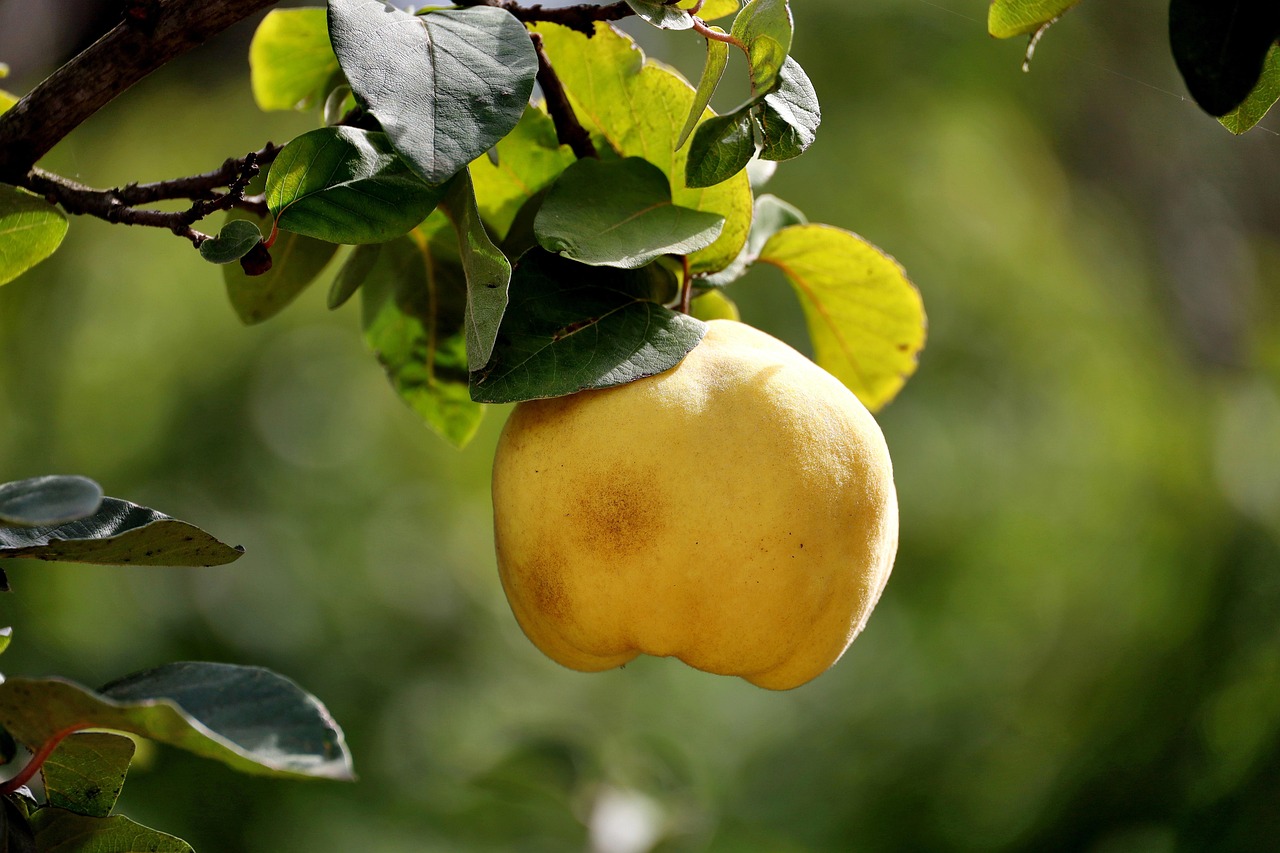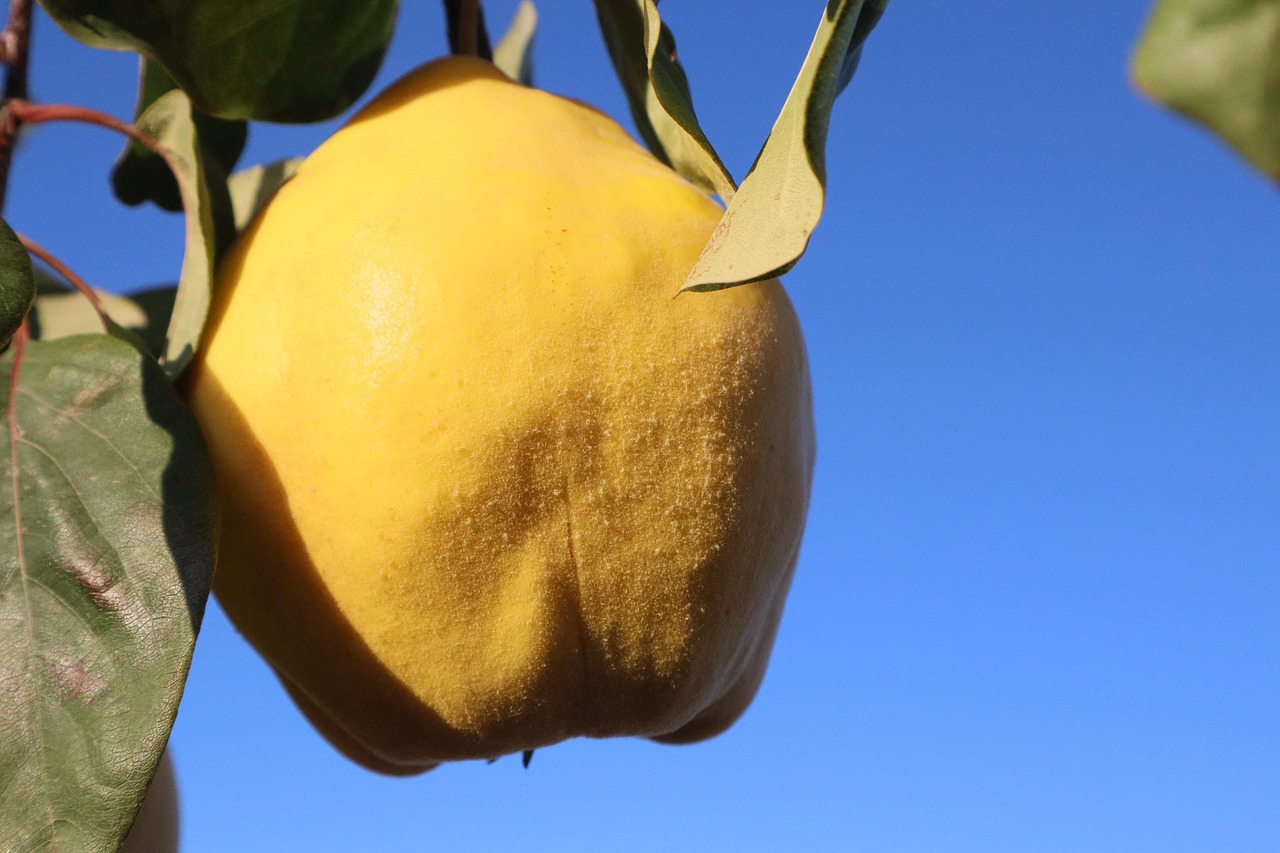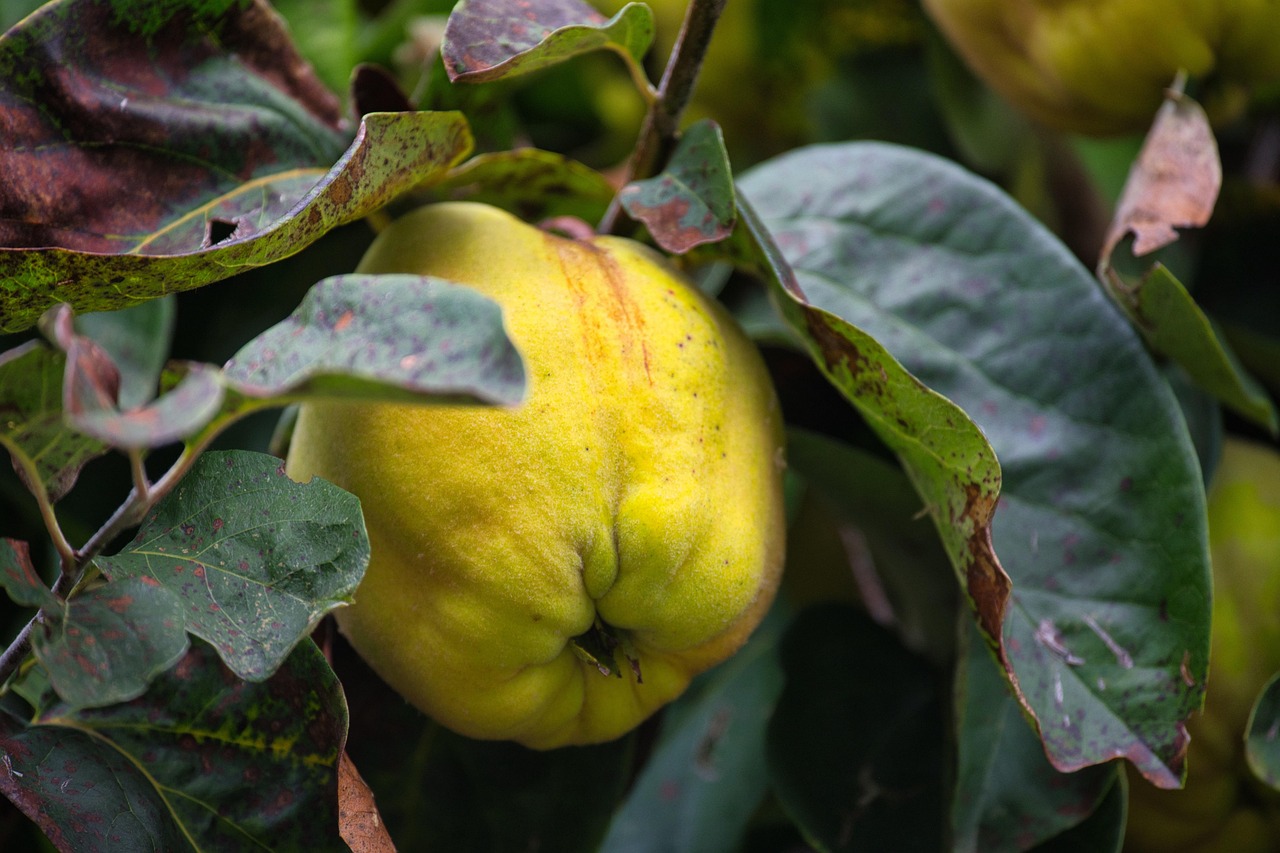Quince tree pruning techniques are essential for promoting healthy growth and maximizing fruit production. Proper pruning enhances sunlight exposure, improves air circulation, and shapes the tree, leading to a fruitful harvest.
The quince tree, known for its fragrant fruit and beautiful blossoms, is a member of the Rosaceae family. It thrives in temperate climates and requires specific care to yield the best results. Pruning is a critical part of maintaining a quince tree’s health. It helps in developing a strong structure and encourages fruitful growth. Understanding when and how to prune your quince tree can significantly impact its productivity.

Pruning should ideally occur during the dormant season, typically in late winter or early spring before new growth begins. This timing allows for easier visibility of the tree’s structure and encourages vigorous growth once the season starts. However, light pruning can also be done during the growing season to remove any dead or diseased branches.
Benefits of Pruning Quince Trees
Pruning offers several benefits that contribute to the overall health of the quince tree. These benefits include:
- Improved Air Circulation: Pruning removes excess branches, allowing for better air movement, which reduces the risk of fungal diseases.
- Enhanced Sunlight Exposure: Properly pruned trees receive more sunlight, which is vital for photosynthesis and fruit ripening.
- Better Fruit Quality: Thinning out branches can lead to larger, more flavorful fruits by reducing competition for nutrients.
- Increased Yield: Regular pruning can result in a higher yield by promoting healthy growth patterns.
Besides these benefits, pruning also helps in maintaining the desired shape of the tree. A well-shaped quince tree is not only aesthetically pleasing but also easier to manage during harvest time.

Understanding Quince Tree Structure
Before starting the pruning process, it is crucial to understand the basic structure of a quince tree. The tree typically has a central leader with several lateral branches extending outward. The main goal of pruning is to maintain this central leader while encouraging lateral branch growth. Here are a few key components of a quince tree’s structure:
| Component | Description |
|---|---|
| Central Leader | The main trunk that grows straight up, forming the backbone of the tree. |
| Lateral Branches | Branches that extend from the central leader and bear fruit. |
| Scaffolding Branches | Major branches that provide structure and support to the tree. |
| Fruit Spurs | Short branches where flowers and fruits develop, typically found on older wood. |
Understanding these components will help you make informed decisions about where to prune and how much to remove.
Essential Pruning Techniques for Quince Trees
There are several techniques you can apply when pruning quince trees. Each technique serves a purpose and contributes to the overall health and productivity of the tree. Below are some essential pruning techniques:
- Crown Thinning: This involves selectively removing branches within the crown to improve sunlight penetration and airflow.
- Crown Raising: Removing lower branches allows for easier access to fruit and enhances overall tree appearance.
- Crown Reduction: Reducing the height or width of the tree helps manage its size and encourages more vigorous growth in lower branches.
- Deadwooding: Regularly removing dead or diseased wood prevents pests and diseases from spreading throughout the tree.
Each pruning technique should be applied judiciously based on the specific needs of your quince tree and its growth pattern. It is vital not to over-prune, as this can stress the tree and reduce fruit production.

In summary, proper pruning techniques are crucial for ensuring healthy growth in quince trees. Understanding the structure of the tree and applying specific pruning methods can lead to improved yields and better fruit quality. As you prepare to prune your quince tree, consider these guidelines for successful outcomes.
Timing Your Pruning for Maximum Effect
One of the critical factors in successful quince tree pruning is timing. The timing of your pruning sessions can significantly influence the health and productivity of your tree. There are two main periods for pruning: dormant and growing seasons. Each has its advantages.
Pruning During Dormant Season
Pruning during the dormant season, typically late winter to early spring, is highly recommended. At this time, the tree is not actively growing, which makes it easier to see its structure. This visibility allows you to make more informed decisions about which branches to remove. Additionally, pruning during dormancy:

- Reduces Stress: The tree experiences less shock when it is not actively growing.
- Encourages New Growth: Pruning stimulates growth when the tree wakes up from dormancy.
- Prevents Disease Spread: Many pests and diseases are less active during winter months.
Pruning During Growing Season
Light pruning can also be beneficial during the growing season, particularly to remove dead or diseased wood. This timing allows you to correct any issues that arise as the tree develops. Pruning during this period can:
- Improve Air Circulation: Removing excessive foliage can enhance airflow within the tree.
- Reduce Competition: Thinning out branches allows remaining branches to receive more sunlight and nutrients.
- Shape the Tree: It helps in guiding the growth direction of new shoots.
Tools Required for Pruning Quince Trees
Using the right tools is essential for effective pruning. Proper tools ensure clean cuts, which help prevent disease and promote quicker healing. Below is a list of essential tools for pruning quince trees:
- Bypass Pruners: Ideal for cutting small branches up to ¾ inch in diameter.
- Loppers: Suitable for medium-sized branches, typically between ¾ inch and 1½ inches in diameter.
- Saw: A pruning saw is necessary for larger branches that cannot be cut with pruners or loppers.
- Hand Gloves: Protect your hands while handling tools and branches.
- Safety Goggles: Protect your eyes from debris while pruning.
Ensure that all tools are sharp and clean before use. Dull tools can damage the tree and make it more susceptible to disease. Cleaning tools with a disinfectant solution before and after pruning helps prevent the spread of pathogens.
Common Mistakes to Avoid When Pruning Quince Trees
Even experienced gardeners can make mistakes when pruning quince trees. Being aware of common pitfalls can help you avoid damaging your tree. Here are some mistakes to watch out for:
- Over-Pruning: Removing too many branches at once can stress the tree and reduce fruit yield.
- Poor Cuts: Making jagged cuts instead of clean ones can lead to infection and delayed healing.
- Ignoring Tree Structure: Failing to consider the natural shape of the tree may result in an unbalanced structure.
- Lack of Planning: Not having a clear plan before starting can lead to haphazard cuts that affect tree health.
The Role of Pruning in Pest Management
Pest management is another critical aspect of maintaining healthy quince trees. Proper pruning plays a significant role in preventing pest infestations. By ensuring good air circulation and light exposure, you reduce conditions that attract pests. Here are ways pruning aids in pest management:
- Eliminating Hiding Places: Pruning removes dense foliage where pests can hide and breed, making it less likely for infestations to occur.
- Monitoring Health: Regular pruning sessions allow you to inspect the tree for signs of pests or diseases early on.
- Healthy Growth: A well-pruned tree is generally healthier, making it less attractive to pests.
By understanding the relationship between pruning and pest management, you can take proactive measures to protect your quince trees from potential threats.
Nurturing Your Quince Tree After Pruning
After pruning, it is essential to nurture your quince tree to ensure it recovers quickly and thrives. Here are some strategies to promote healthy recovery:
- Watering: Ensure the tree receives adequate water, especially after pruning, to support new growth.
- Fertilizing: Apply a balanced fertilizer to provide nutrients that may have been depleted during the pruning process.
- Mulching: Adding mulch around the base helps retain moisture and suppress weeds.
- Avoiding Stress: Minimize additional stressors like heavy foot traffic around the tree during its recovery period.
Nurturing your quince tree after pruning sets the foundation for vigorous growth and fruitful production in the upcoming seasons. By following these guidelines, you can ensure that your quince tree remains healthy and productive throughout its life cycle.
Common Diseases and Pests Affecting Quince Trees
To ensure the health and productivity of your quince tree, it’s important to be aware of common diseases and pests that can affect it. Understanding these threats allows you to take preventive measures and respond quickly if problems arise.
Common Diseases
Several diseases can impact quince trees, primarily caused by fungi, bacteria, or viruses. Here are some notable ones:
- Fire Blight: A bacterial infection that causes blossoms and young shoots to wilt and turn brown. It can spread quickly, so prompt removal of infected branches is crucial.
- Powdery Mildew: This fungal disease appears as white powder on leaves and stems. It thrives in humid conditions and can weaken the tree if not managed.
- Crown Gall: Caused by a bacterium, this disease creates galls or tumors on the roots and stems, affecting the tree’s ability to absorb nutrients and water.
- Leaf Spot: Various fungal pathogens can cause dark spots on leaves, leading to defoliation and reduced photosynthesis.
Pest Issues
Pests can also pose significant threats to quince trees. Here are some common pests to watch for:
- Codling Moth: This pest lays eggs on developing fruit, leading to wormy, damaged fruit. Monitoring traps can help manage their population.
- Spider Mites: These tiny pests thrive in hot, dry conditions and can cause leaf discoloration. Regularly inspecting the undersides of leaves can help detect early infestations.
- Aphids: Small, soft-bodied insects that suck sap from leaves and stems, leading to distorted growth. They can also transmit diseases.
- Scale Insects: These pests attach themselves to branches and leaves, sucking sap and weakening the tree. Treatments may include horticultural oils or insecticidal soap.
Integrated Pest Management (IPM) for Quince Trees
Implementing an Integrated Pest Management (IPM) approach is essential for maintaining a healthy quince tree environment. IPM combines various strategies to manage pests while minimizing harm to the ecosystem. Here are key components of an effective IPM plan:
Monitoring and Identification
Regularly inspecting your quince tree for signs of disease or pests is crucial. Early detection allows for timely intervention. Use the following methods for monitoring:
- Visual Inspections: Regularly check for unusual leaf discoloration, wilting, or presence of insects.
- Pheromone Traps: These can help monitor populations of specific pests like the codling moth.
- Sticky Traps: Placing sticky traps around the tree can help catch flying insects and give insights into pest populations.
Cultural Practices
Cultural practices play a significant role in preventing pest issues. Consider the following strategies:
- Proper Watering: Watering deeply but infrequently can promote strong root growth and reduce stress on the tree.
- Nutrient Management: Providing adequate nutrition through balanced fertilization enhances tree vigor, making it more resistant to pests and diseases.
- Sanitation: Removing fallen leaves and fruit from around the tree can help prevent pest breeding grounds.
Biological Controls
Biological controls use natural predators or parasites to manage pest populations. Consider introducing beneficial insects such as ladybugs or lacewings, which feed on aphids and other harmful pests.
The Role of Fertilization in Tree Health
Fertilization is a critical component in maintaining the health of quince trees. Proper nutrient management supports strong growth, fruit production, and overall resilience against diseases and pests.
Understanding Nutrient Needs
Quince trees require a balanced supply of essential nutrients, including nitrogen (N), phosphorus (P), and potassium (K). Here’s how each nutrient contributes to tree health:
- Nitrogen: Promotes vigorous vegetative growth and is essential for leaf development.
- Phosphorus: Supports root development, flower formation, and fruit set.
- Potassium: Enhances overall plant health, increases resistance to diseases, and improves fruit quality.
When to Fertilize
The best time to fertilize quince trees is in early spring before new growth begins. A second application may be beneficial in late summer to support fruit development. Always follow soil test recommendations for optimal nutrient levels.
Types of Fertilizers
Selecting the right type of fertilizer is essential for effective nutrient delivery. Here are some common options:
- Granular Fertilizers: Slow-release formulations provide nutrients over an extended period.
- Liquid Fertilizers: Quick-acting options that can quickly address nutrient deficiencies but require more frequent applications.
- Organic Fertilizers: Compost or well-rotted manure improves soil structure and adds beneficial microorganisms.
By understanding the importance of fertilization and integrating it with pruning techniques, you can enhance the health and productivity of your quince trees significantly.
Additional Care Practices for Quince Trees
In addition to pruning and fertilization, several other care practices can contribute to the health and productivity of quince trees. Implementing these practices can help ensure that your trees thrive, leading to abundant fruit production.
Irrigation Practices
Watering is a critical component of quince tree care. Proper irrigation ensures that the tree receives adequate moisture, particularly during dry spells. Here are some irrigation tips:
- Deep Watering: Water deeply and infrequently to encourage deep root growth. This method helps the tree become more drought-resistant.
- Mulching: Apply a layer of organic mulch around the base of the tree to retain moisture and regulate soil temperature.
- Drip Irrigation: Consider using drip irrigation systems to provide consistent moisture directly to the root zone, reducing water wastage.
Soil Management
Healthy soil is foundational to a productive quince tree. Here are some practices to maintain soil quality:
- Soil Testing: Regularly test your soil to determine pH and nutrient levels. This information helps you amend the soil as needed.
- Aeration: Aerating the soil can improve root development and enhance water and nutrient absorption.
- Cover Crops: Planting cover crops during the off-season can improve soil structure and add nutrients when tilled back into the soil.
Pest and Disease Monitoring
Regular monitoring for pests and diseases is essential for maintaining healthy quince trees. Early detection can help minimize damage. Here are some monitoring techniques:
- Regular Inspections: Inspect leaves, stems, and fruit for signs of pests or diseases at least once a week.
- Record Keeping: Maintain a journal of any pest sightings or disease symptoms. This information can help identify patterns over time.
- Consultation: Don’t hesitate to consult with local agricultural extension services or arborists for advice on pest management specific to your region.
Pruning Techniques for Different Growth Stages
Quince trees go through various growth stages, each requiring specific pruning techniques to ensure optimal health and fruit production. Understanding these stages will allow you to tailor your approach effectively.
Young Trees (1-3 Years)
During the first few years, the goal is to establish a strong framework. Here are techniques suitable for young quince trees:
- Crown Formation: Focus on establishing a central leader and evenly spaced lateral branches.
- Initial Thinning: Remove any weak or crossing branches to promote strong growth.
- Height Control: If necessary, pinch back the top of the central leader to encourage lateral branch development.
Mature Trees (3+ Years)
For mature quince trees, the focus shifts towards maintaining health and enhancing fruit production. Use these techniques:
- Renewal Pruning: Remove older branches that have low fruit yield, encouraging new growth that will produce better fruit.
- Fruit Spur Management: Thin out excess spurs to reduce competition and improve fruit size and quality.
- Disease Management: Remove any diseased or damaged wood promptly to prevent further issues.
Final Thoughts
Caring for quince trees requires knowledge and attention to detail. Pruning is a significant aspect of this care, but it should be complemented with proper watering, fertilization, pest management, and disease prevention. By understanding the unique needs of your quince tree at different growth stages, you can foster a healthy environment that leads to fruitful growth.
The combination of pruning techniques tailored to each stage of growth, along with diligent monitoring of tree health, will create a thriving quince tree capable of producing abundant fruit year after year. As you implement these strategies, remember that patience is key; healthy trees take time to develop and bear fruit. With dedication and care, your quince trees will flourish.
